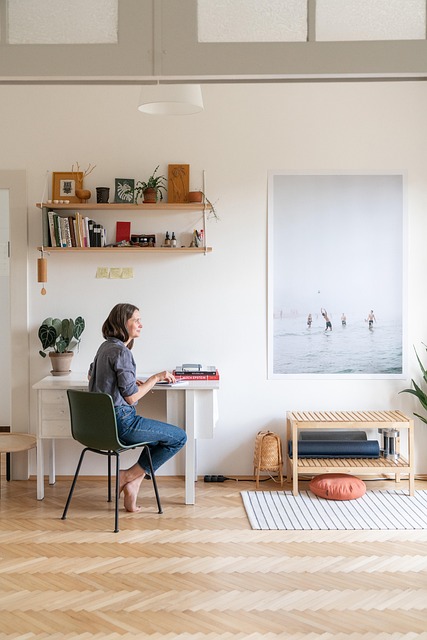Refresh Your Home with Wall Stickers: Ultimate Guide
Discover how wall stickers and decals can instantly update your rooms without permanent changes. This comprehensive guide covers choosing designs that suit your decor, professional placement tricks, installation steps, and care tips. Perfect for renters and homeowners wanting affordable, removable wall art. Learn how to create focal points, manipulate room proportions, and pick materials—wall stickers make decorating simple and stylish.

Wall stickers and decals offer a fast, affordable way to give any room personality without the commitment of paint or wallpaper. They come in countless styles—nature motifs, bold typography, geometric patterns, and fully custom artwork—so you can tailor a look that fits your taste and the function of each space. Whether you want a subtle accent or a dramatic mural, these adhesive designs let you refresh interiors with minimal effort.
Choosing the Right Wall Art for Your Space
Selecting the best decal starts with assessing your room’s existing style, color palette, and purpose. Think about the mood you want to create: calming landscapes for bedrooms, playful graphics for kids’ rooms, or elegant scripts for living areas. Match the scale of the design to the wall—large images work as focal points on expansive walls, while smaller motifs suit narrow or clustered surfaces.
Consider material and finish as well. Vinyl decals are durable and often offer crisp, vibrant prints; fabric stickers provide a softer, textured look and can be easier to reposition; custom options let you specify exact colors or dimensions. If your decor is minimalist, choose simple shapes and muted tones. For eclectic interiors, combine varied sizes and themes to build layered interest that still feels cohesive.
How to Use Wall Stickers in Home Decor
Strategic placement elevates impact. Position major elements at eye level or slightly above furniture to anchor a room visually. Repeating a small motif in a pattern can add subtle rhythm and texture across a narrow hallway or stairwell. If you want a statement, place a large decal behind a sofa or bed instead of a headboard or artwork.
Scale matters: oversized designs can dominate and make a space feel busy, while tiny, scattered stickers might get lost. Balance is key—coordinate the colors of the decals with existing furnishings and accessories so the result feels intentional rather than pasted on. For multi-functional rooms, use decals to define zones: apply a horizontal band to widen a workspace or a vertical stripe to accentuate height in a compact area.
Designer Techniques to Transform Rooms
Interior decorators use decals as quick, low-risk tools to change perception of space. Horizontal patterns visually broaden a room, creating a sense of expansiveness—useful for narrow living rooms or corridors. Vertical elements draw the eye upward, making ceilings feel taller; this is handy in rooms with low ceilings.
Advanced approaches include layering complementary designs for depth, or using color blocking—placing contrasting decal shapes to delineate seating areas, reading nooks, or play zones. Mixing different finishes (matte with gloss) or alternating solid shapes with patterned decals adds sophistication. Lighting also plays a role: place decals where natural or accent lights highlight their forms to turn them into subtle focal points.
Installation and Care
Preparation and technique are essential for a smooth application and long-term adhesion. Before you start, clean the surface thoroughly and ensure it’s smooth and completely dry. Temperature and humidity can affect stickiness, so follow the manufacturer’s environmental recommendations.
Typical steps for applying most adhesive art:
- Clean the wall using an alcohol-based cleaner to remove grease and dust.
- Mark placement lightly with pencil or painter’s tape and check alignment with a level.
- Peel backing slowly and position the decal; start from the center and press outward to avoid trapping air.
- Smooth out bubbles or wrinkles with a squeegee, credit card, or soft cloth, working from the center toward the edges.
To remove decals, peel gently at a corner and pull slowly at a low angle. If residue remains, use warm soapy water or a recommended adhesive remover—test any solvent in an inconspicuous area first. Most well-made stickers leave little to no damage when removed correctly, making them ideal for rented homes.
Pricing and Durability
| Type of Wall Sticker | Average Cost Range | Durability |
|---|---|---|
| Vinyl Decals | $15 - $50 | 3-5 years |
| Fabric Wall Stickers | $25 - $75 | 2-4 years |
| Custom Designs | $50 - $200+ | 3-5 years |
| Large Murals | $100 - $300+ | 4-6 years |
Prices, rates, or cost estimates mentioned in this article are based on the latest available information but may change over time. Independent research is advised before making financial decisions.
Wall stickers are an accessible, flexible decorating solution whether you’re refreshing a long-term home or sprucing up a rental. They let you experiment with scale, color, and placement without the expense or permanence of traditional renovations. By choosing designs that fit your space, using professional placement strategies, and following simple installation and care steps, you can achieve striking results that are both stylish and practical.
With evolving materials and printing techniques, adhesive wall art continues to offer creative ways to personalize interiors—making it a staple in modern decorating toolkits.






